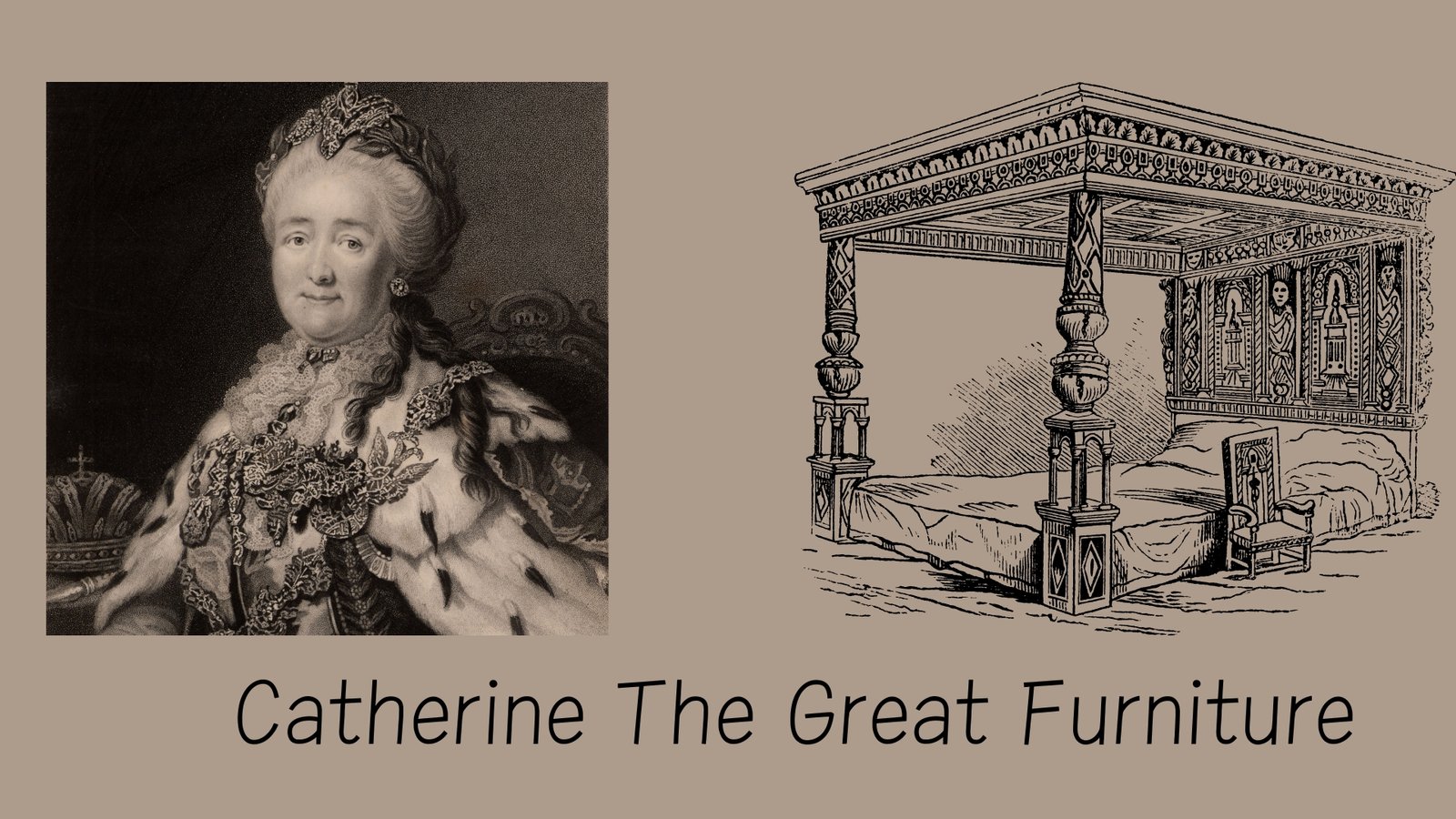When it comes to scandalous tales of royalty, one name that often comes to mind is Catherine the Great. Known for her intelligence, power, and scandalous personal life, Catherine the Great of Russia has left behind a legacy that continues to intrigue historians and art enthusiasts alike. However, one aspect of her life that often gets overlooked is her collection of x-rated furniture. Yes, you read that right – x-rated furniture. In this blog post, we will delve into the world of Catherine the Great’s furniture collection and explore the fascinating and risqué pieces that she owned.
Unraveling the Mystery Behind the Collection
The enigmatic allure surrounding Catherine the Great’s furniture collection has captivated the curiosity of many for centuries. Crafted in the 18th century, these pieces were not merely furnishings but bold declarations of aesthetic and erotic expression. The explicit nature of this collection, featuring designs ranging from chairs with phallic imagery to tables graced with sensual carvings, distinguishes it significantly from the conventional decor of its era. This provocative choice in home furnishings reflects the empress’s fearless embrace of her sexuality and her innovative spirit. Delving deeper into the collection, it becomes apparent that each piece was a canvas for the artisans, who imbued their work with a level of detail and craftsmanship that goes beyond mere functionality. The explicit designs, far from being gratuitous, served multiple purposes—challenging societal norms, asserting personal freedom, and perhaps, encoding the private desires and the unapologetic boldness of Catherine herself. The collection’s existence and survival through the ages underscore the complexities of Catherine’s character and her sophisticated taste in art and design. As we explore the stories and craftsmanship behind these daring pieces, we uncover more than just furniture; we find a fascinating blend of art, power, and sexuality that defined the legacy of one of history’s most powerful women.
A Peek into the Royal Boudoir: The Design and Craftsmanship
Delving into the royal boudoir to explore the design and craftsmanship of Catherine the Great’s x-rated furniture unveils a world where opulence meets erotica in an unparalleled manner. Each piece, from ornately carved chairs to tables adorned with lascivious motifs, exemplifies the zenith of 18th-century craftsmanship. The artisans commissioned for this audacious project were undoubtedly masters of their craft, employing techniques that pushed the boundaries of traditional furniture making. Exquisite woods were sculpted, polished, and sometimes gilded, transforming them into works of art that challenged and transcended conventional aesthetics.
The furniture’s elaborate designs did more than just serve a functional purpose; they were an embodiment of luxury and a bold statement of the Empress’s unyielding authority and taste. Intricate details, such as the delicate inlays, the subtle curvature of the legs, and the provocative imagery that melds seamlessly with the overall design, reveal a meticulous attention to detail. The choice of materials—rich velvets, exotic woods, and precious metals—further accentuated the sensual appeal of each piece, making them not only visually striking but also tactilely inviting.
Through the lens of modern sensibilities, these pieces might be viewed purely as provocative art; however, within the context of Catherine’s reign, they symbolized the peak of cultural and artistic freedom. The craftsmanship of Catherine the Great’s furniture serves as a testament to the era’s artistic liberties, where the exploration of sexuality through art was both a personal and political act, showcasing the Empress’s prowess in steering the cultural helm of her empire.
The Symbolism and Hidden Meanings
At first glance, the explicit imagery of Catherine the Great’s furniture may shock or amuse, yet a deeper dive into these provocative pieces reveals layers of symbolism and potentially hidden meanings that go far beyond their surface allure. It is speculated that these audacious designs were not merely for erotic gratification but were imbued with significant cultural and political symbolism, reflective of Catherine’s era, beliefs, and personal journey. Some historians argue that the bold eroticism carved into the furniture was a metaphor for Catherine’s own liberation from the constraints of her role as a female ruler in a predominantly male empire. The furniture could symbolize her political power and control, asserting her dominance in both the court and the bedroom, areas where she wielded considerable influence.
Further analysis suggests that these pieces might also have served as a silent commentary on the nature of power and its intersections with gender and sexuality. By integrating explicit sexual imagery with the luxurious decor of her court, Catherine may have been challenging the established norms and expectations of female sexuality and power, crafting a narrative that celebrated her autonomy and authority. This move was bold and transgressive, blurring the lines between private desire and public persona, and suggesting a complex relationship between the personal and the political.
Through this lens, Catherine’s furniture transcends its initial shock value, becoming a rich text for interpreting the intertwined narratives of power, gender, and sexuality in the 18th century.
The Scandalous Reception of the Furniture
The debut of Catherine the Great’s x-rated furniture collection sent shockwaves through society, igniting a firestorm of controversy that has lingered in historical discourse. The audacious nature of these pieces, marked by their explicit imagery and luxurious craftsmanship, divided public opinion and stoked fervent discussions among the aristocracy and the general populace alike. Critics condemned the collection as flagrantly indecent, decrying what they perceived as a blatant disregard for moral decency and the sanctified boundaries of royal decorum. Supporters, on the other hand, lauded the Empress’s courage in challenging conventional norms and celebrating human sexuality with such unapologetic boldness. This polarized reception underscored the broader cultural tensions of the time, highlighting the clash between traditional values and the burgeoning Enlightenment ideals of personal freedom and expression.
The scandal was not merely a matter of taste or morality but became emblematic of the changing dynamics of power, gender, and artistic freedom. It illuminated Catherine’s complex legacy as a ruler who wielded her authority with unmatched deftness, navigating the turbulent waters of political intrigue and societal expectations. The furniture, thus, became more than objects of controversy; they were catalysts for debate on the role of the monarchy, the place of women in leadership, and the limits of artistic expression. This vehement reception, far from diminishing the collection’s value, has instead immortalized it, securing its place in the annals of history as a provocative testament to Catherine the Great’s unyielding spirit and her era’s intricate tapestry of cultural and political transformations.
Viewing the Collection Today: Locations and Accessibility
For enthusiasts eager to lay eyes on the notorious collection of Catherine the Great’s x-rated furniture, there are select venues that afford this unique opportunity. While some pieces are ensconced within the hallowed halls of renowned museums, offering a glimpse into the audacious blend of art and eroticism that marked Catherine’s reign, others are held in the less accessible vaults of private collectors. The exact whereabouts and availability of these pieces can vary, as exhibitions may rotate or be subject to special viewings. It is advisable for those interested to check with major European art museums or galleries known for their 18th-century collections for any current or upcoming exhibitions that might feature items from this provocative collection. In addition, auction houses and art historians specializing in Russian imperial history may provide leads on when and where these unique artifacts could next be displayed to the public. Though not every piece of this controversial collection is readily viewable, the ones that are accessible offer a fascinating insight into the complexities of Catherine’s court and the era she dominated. Interested individuals should remain attentive to announcements from institutions with significant collections of historical artifacts, as they occasionally curate exhibitions that bring hidden treasures like Catherine’s x-rated furniture into the light, allowing contemporary audiences a rare and enlightening glimpse into the past.
Must Read: Money6x Real Estate: The Uncovered Trick to Secure Financial Future
The Lasting Impact on Art and Culture
Catherine the Great’s daring collection of x-rated furniture has transcended its initial controversy to leave a profound mark on both the art and cultural landscapes. These pieces, once the subject of scandal and division, have evolved into iconic symbols of artistic freedom and sexual liberation. Their influence extends beyond mere aesthetics, challenging artists and designers to explore the boundaries of creativity and societal norms. This collection has sparked dialogue and debate, encouraging a deeper examination of the intersections between power, gender, and art. It embodies a historical shift towards a more open exploration of sexuality and artistic expression, serving as a catalyst for change in both artistic communities and societal attitudes. Through the years, the legacy of Catherine’s furniture has inspired modern creatives to push the envelope, blending form and function with provocative themes. This enduring impact underscores the role of art in shaping cultural conversations and transforming public perceptions. Catherine’s collection, once confined to the shadows of controversy, now shines as a testament to the enduring power of art to challenge, provoke, and inspire. It stands as a vibrant reminder of the Empress’s boldness and a beacon for those who dare to defy convention in the pursuit of artistic and personal expression.





